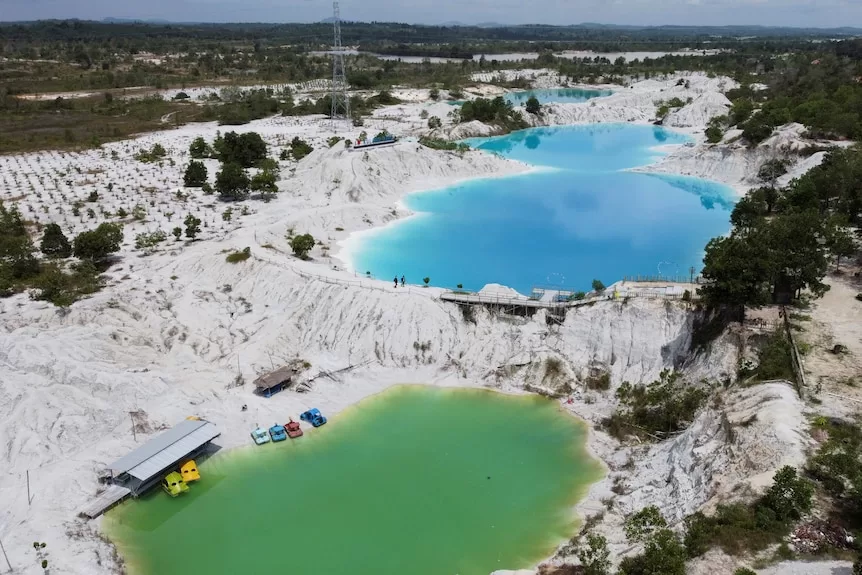- In short: With approximately 150 crocodile attacks, resulting in 85 deaths each year, Indonesia has the highest level of saltwater crocodile conflict globally.
- Illegal tin mining is resulting in more crocodile attacks, as the destruction of their natural habitat is forcing them to source food in other, human-inhabited areas.
- What’s next: Conservation groups in Indonesia are trying to help animals that have been impacted by the illegal mining.
Indonesia has the highest crocodile attack rate in the world — but it’s likely not for the reason you think.
In the decade up to 2023, more than 1,000 attacks took place, leading to 486 deaths, and experts say the proliferation of illegal tin mines is to blame.
Areas with larger amounts of tin tend to be more prone to crocodile-conflict incidents — in particular, the Bangka-Belitung islands, off the south-eastern coast of Sumatra.
Brandon Sideleau is a wildlife biologist and founder of CrocAttack, a worldwide database tracking incidents between humans and crocs.
“In terms of reported attacks, Indonesia is definitely the highest by far, well over, probably close to 150 attacks reported annually, and about 85 deaths annually, and that’s just what we get,” he said.
“If you include Papua and West Papua, where there’s barely any reporting, it’s probably closer to around, you know, 120 deaths, and probably close to 200 attacks, but that’s just an extrapolated estimate.”
Illegal mining has destroyed natural biodiversity and crocodile habitats, resulting in a depletion of fish and other species they would naturally prey upon, Mr Sideleau said.
Instead, they start going after “domestic animals, livestock, dogs, stuff like that, and occasionally people”.
The crocodiles move into old, flooded mines or areas known as “kulongs”.
“[The kulongs] fill with crabs and fish, and they may attract, like dogs, livestock, and people actually use them for bathing, sometimes for fishing,” Mr Sideleau said.
“Miners still use them to mine after they’ve been flooded in full and this also attracts crocodiles.”
Protecting crocodiles and humans
Tin is used largely in smartphones, as well as other electronic devices.
The regional government of Bangka-Belitung gained control of the tin mines after Indonesia democratised in 1998, and in 2001, citizens were given the right to mine.
However, illegal mines boomed as a result, and unregulated mining methods led to severe degradation of land and wildlife displacement.
Endi Yusuf is the manager at Alobi Wildlife Rescue Centre, based in Bangka-Belitung.
His team tries to rescue and rehabilitate wild animals, including crocodiles, that have been impacted by illegal mining.
“There is a serious problem here … about the conflict — the victim is not just the animals, but the victim is the people too,” he said.
Mr Yusuf said natural habitat decreases every year, causing an increase in conflicts between animals and humans.
“Bangka-Belitung is a very small island, we have the limited area, we have the limited habitat,” he said.
“[The] ecosystem is broken. Everything is broken, [crocodiles] don’t have the food anymore in their [natural] habitat.
“[We] fight every day to save [the animals] or evacuate them.”
The amount of space and funding available to the organisation limits the work they can do.
Currently, the rescue centre is home to a handful of small crocodiles, but rehabilitation is not a suitable option in Bangka-Belitung due to the damage caused by illegal mining.
In the past, the team relocated animals to the neighbouring island of Sumatra.
